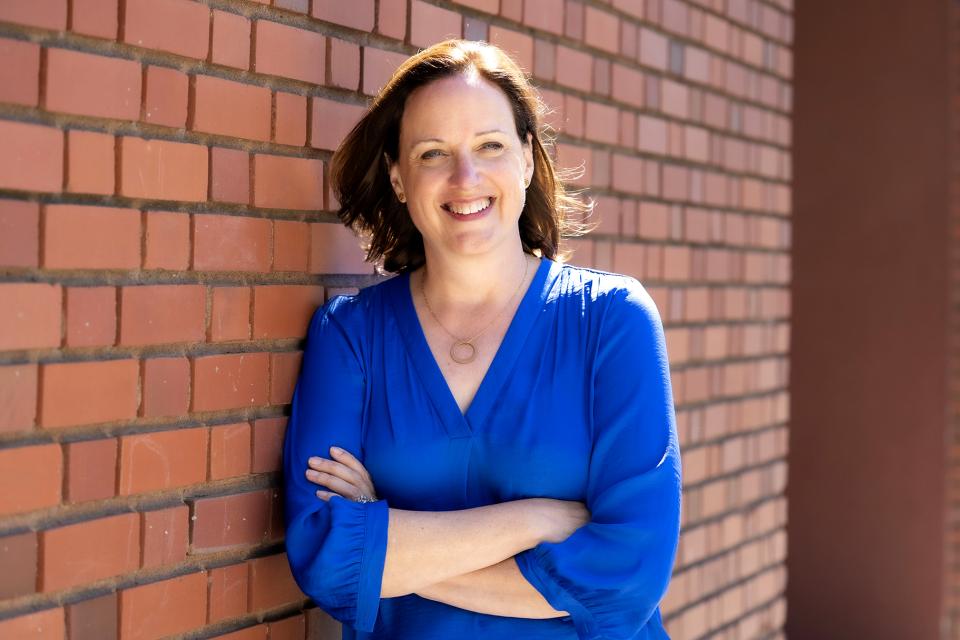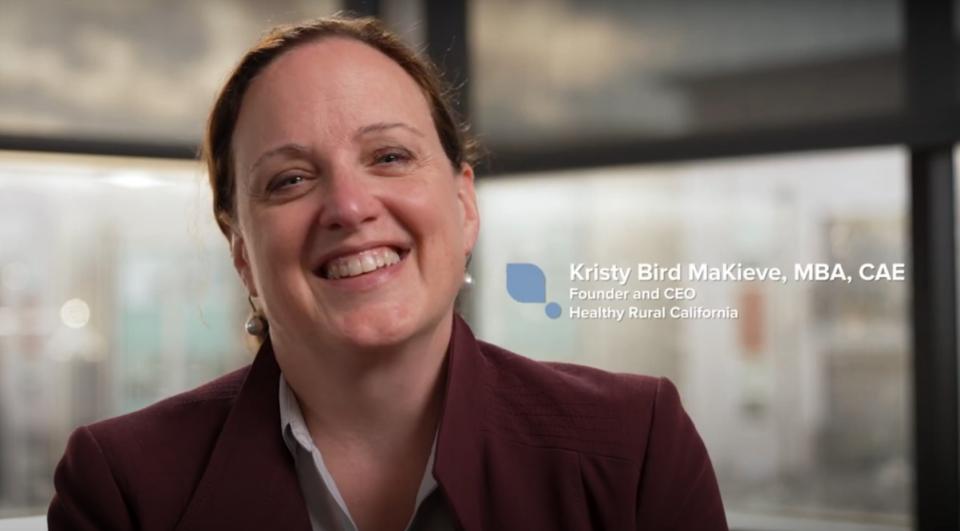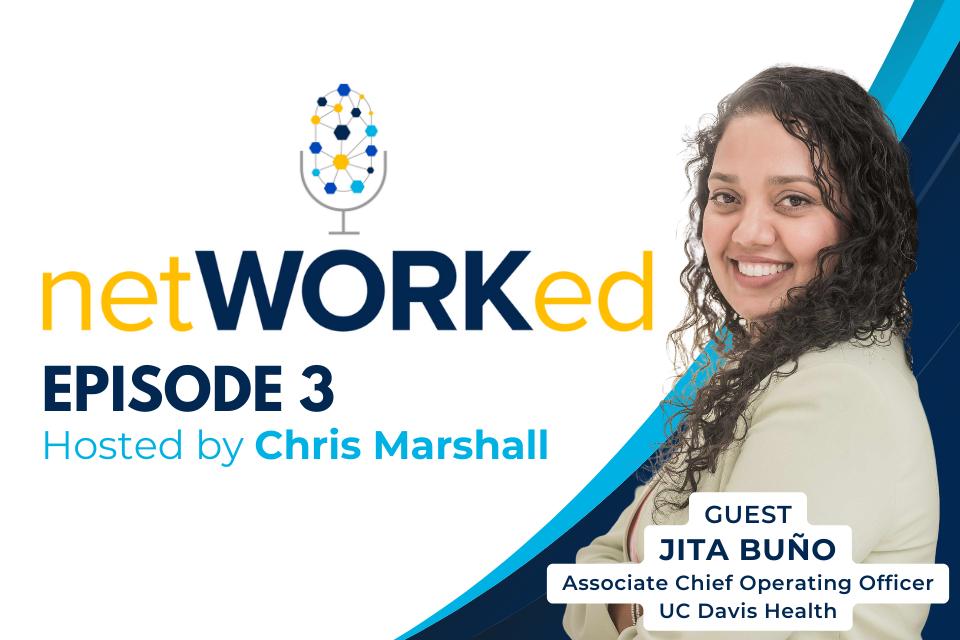My MBA Journey Empowering Rural Healthcare Access
Collaborative leadership key to establishing medical education in Northern California

It’s not every day that you get the opportunity to start a new non-profit from the ground up and build it up in less than 10 years to a $5 - $6 million operation—and help a region address critical access to health care issues.
I’m involved in essentially building a medical school where none exists.
After I completed my Master of Business Administration at the UC Davis Sacramento Part-Time MBA program in 2015, I knew I had the skills to lead a non-profit. I also became credentialed as a Certified Association Executive (CAE).
Three years later, I deeply felt the impact of the Camp Fire in Paradise. I offered to help my friend, Pam Nelson, run the Butte-Glenn Medical Society (BGMS).
Collaborative Leadership in Rural Northern California
In January 2019, I became the executive director and only staff member of this tiny 501(c)(6) non-profit located in Chico. It’s about 1.5 hours north of Sacramento, where I live. The board of directors and I estimated that 40 to 60 physicians left the Paradise area due to the Camp Fire. We made access to care our number one priority. I raised almost $500,000 in grant funds by the end of that first year.
With an annual income of less than $50,000 and a small amount of reserves, the nonprofit needed a sustainable business model. I knew innovation was the key.
I worked with the BGMS board to establish a new non-profit, Healthy Rural California, Inc. As a 501(c)(3), HRC can garner grant funding to align with BGMS’s public health projects and mission. I became the CEO. Maybe we’d raise $200,000 to $300,000 per year.
I thought that this would be it. Two small non-profits, and 2 part-time jobs. Together they might pay me a decent salary. But my plan to stay small was short-lived.

Just as Healthy Rural California gained IRS approval in January 2020, we were also exploring how to establish graduate medical education in rural areas. I was leading a residency task force. The community immediately demanded that we start with a psychiatry residency, and if possible, pursue primary care residency programs.
With only half of medical residents likely to stay in the region post-residency, we knew of no other way to recruit and retain physicians. With the pandemic exhausting the resources of the independent local hospitals, our growing team had to be creative to meet accreditation requirements.
Healthy Rural California: Medical Residencies Transforming Futures
Fast forward to February 2023, Healthy Rural California had become a sponsoring institution (its own accreditation process) and the psychiatry residency received accreditation! On March 15, 2024, we welcomed the first class of four psychiatry residents through Match Day. We will build to 16 residents in the four-year curriculum.
In February 2024, Healthy Rural California received accreditation for a new family medicine residency. In 2025, we’ll have four residents per year for the three-year curriculum. This will be a total of 12 residents in each cohort.
Together, the psychiatry and family medicine residents will bring 28 new residents to the rural and underserved region of Northern California. There are no large health systems and no medical schools. Our model is a non-profit, consortium model which is one of only three in the country.
With 28 residents each year, this will bring $5 or $6 million in new revenue to the city of Chico and Butte County. Most people don’t think of graduate medical education as a new industry, but they are. We’re seeking investors to help Healthy Rural California ride the waves of federal funding.
Partnering with UC Davis School of Medicine
I’m working with our board to possibly create a new federally qualified health center, depending on what makes the most sense. We are also partnered with UC Davis School of Medicine and Touro University College of Osteopathic Medicine to build regional campuses. These will bring third-year medical students to the region for their 12 months of clinical rotations. This might lead to a branch campus down the road.
Both medical schools are interested in partnering with California State University, Chico’s pre-med program. This will help the pathway to medical education in the region.
In addition, Healthy Rural California will consider an internal medicine residency and other residency programs with Enloe Health, the primary hospital for family medicine.
Healthy Rural California is going strong with the Healthcare Pathways program, providing $4,250 stipends to students pursuing medicine, nursing, and Allied Health. Our MedEd club is working with all high schools in Glenn County, which is considered frontier, to inspire high school students to pursue healthcare careers. Next up will be in Shasta County.
Northern California: New Job Opportunities on the Horizon
Healthy Rural California now employs 13 full-time employees. We’ve raised almost $6 million in grants since launching in 2020. We are regional in scope, encompassing at least 10 counties in the rural north. We provide fiscal oversight and funding for Butte-Glenn Medical Society and have a managerial services agreement to run North Valley Medical Association in Redding, which is in Shasta County.
My salary has tripled, I now offer health and retirement benefits, and we have developed a positive culture."
I’m now developing a regional HEALTH2040: A Master Plan to Improve Health and Health Equity. We also launched a social determinants of health study, and we’re now managing a youth prevention program.
I’m raising awareness that by 2030, Butte County will have a shortage of 11,000 workers due to the aging population. There are significant opportunities for business leaders, with CSU Chico's strong business program also offering teaching prospects."
The city has a good vibe. As the Bay Area spills into neighboring areas, and Sacramento becomes more densely populated, you might consider the rural north. Home to beautiful Lassen National Park, Table Mountain, and Bidwell Park in Butte County, Mt. Shasta, endless almond and walnut orchards…there are agricultural, non-profit, health, and other opportunities.
I encourage Graduate School of Management students to consider non-profit leadership and innovation. Collaboration is required for non-profit leadership. It can be fun, and it’s rewarding to know that you’re helping a community in need.

